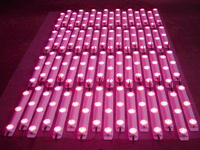LED Experiment
The ability to grow plants either for remote earth or space stations is dependent on both light (power) and space which are limited resources in closed systems. Traditional lighting sources such as sodium vapor and fluorescent lamps require massive power to be operated, emit mostly white light that cannot be absorbed by plants, and are bulky and not easily transported. Light emitting diode (LED) arrays may provide the solution to this problem as they use far less power, emit wavelengths specific to plant growth and productivity (not white light), and are small and light, thus easy to transport and operate.
To date, there has been no LED light developed that can efficiently grow high nutrient, fat or carbohydrate crops for human consumption – most LED’s have been developed to grow lettuce, tomatoes and other plants that do not require intense light. SolarOasis, a US company, has partnered with Biosphere Foundation to design and develop an LED light specific for growing food crops in a closed system where space and power are prime design constraints.
Biosphere Foundation and its partner, Biospheric Design a Division of Global Ecotechnics Corporation, tested this new LED light array in its Laboratory Biosphere, an environmentally controlled 12’ diameter closed chamber in 2006. The crop selected was Apogee wheat, Triticum sativus; an ultra-dwarf high-yielding species that has previously been tested in space and earth-based closed systems. The growth and productivity was compared with the results of growing the same species of wheat in the same chamber using traditional sodium vapor lights.
Results were favorable, but more testing and work with the LED’s was needed and unfortunately this was the last experiment conducted at the Laboratory Biosphere.
Click here to view SolarOasis LED lights: http://www.solaroasis.com
